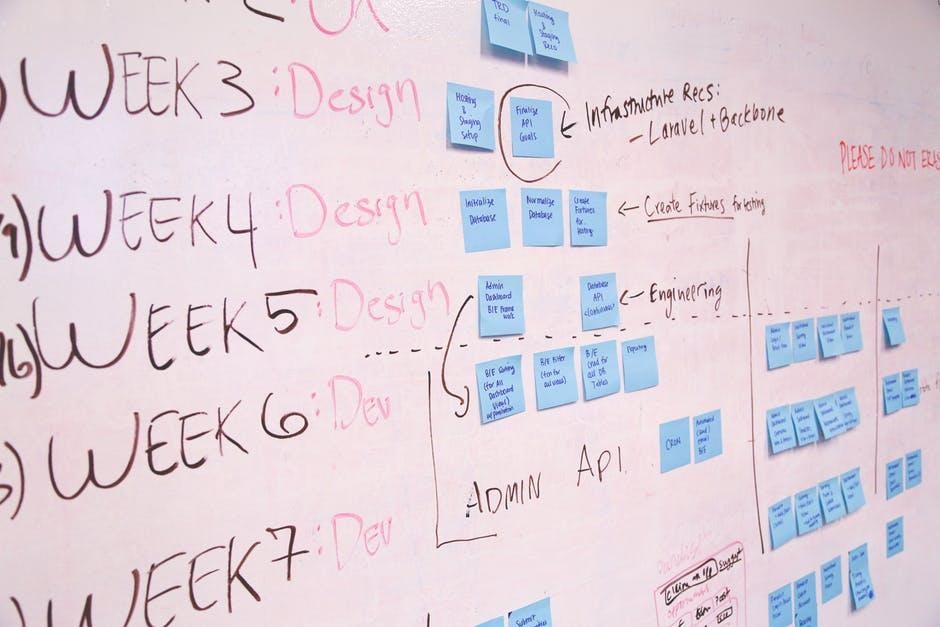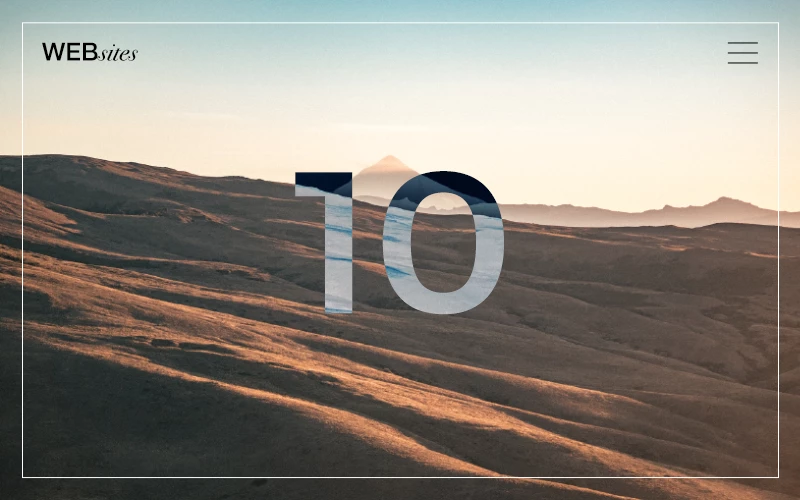When you've got your head buzzing with millions of fresh ideas and creative ambitions, it's pretty tempting to focus solely on the fun part of web design. You can't wait to create a unique website for each client - and that's great! But what makes a new project challenging is that there's always a risk of finding yourself at a dead-end if you fail to meet your client's expectations. However, before you start, you need to prepare a set of questions to ask when building a website for a new client. A website design questionnaire is your most valuable asset to understand clients' business needs, intent, viewpoints, and long-term goals. Today, we will discuss these questions and give you a short guide so you can meet your clients halfway and deliver them the best websites possible!
Why Do You Need a Web Design Client Questionnaire?
As website designers, we all want to impress our clients with the outcome. In that case, you need to put yourself in their shoes and understand their motivation, strengths, pain points, objectives, and budget. You also need to consider their target audience, promotion tactics, and lead generation strategies right from the beginning. As we all know, designing a service website is different from creating an eCommerce store. Such websites differ in purpose, target audience, marketing, and even SEO practices, let alone templates and branding. So keep in mind what the core purpose of the website is going to be.

12 Questions to Ask When Building a Website from Scratch
Below are twelve questions to ask when building a website for a client to create a fantastic user experience (UX) for the target audience. They will help you kick off your web project at the right angle and ensure that your client's newly designed website hits the mark. Keep in mind that the issues addressed in the following web design questionnaire primarily concentrate on creating a new website. At the end of this guide, we will offer you some additional questions to ask when updating an existing website, so you have a couple of starting points.
1. What is your business about?
Getting to know your client is the best starting point. The answer to this question might be evident if you're going to work for, let's say, a kids' store selling trending children's products, cuddly toys, and educational playsets. But what if you had to design a website for a company providing "risk identification and management services in the renewable industry?"
Regardless of who your client is, it would be best if you had an in-depth idea of the following:
-
What they do;
-
How long they have been in the market;
-
Their company's fundamental values;
-
Products;
-
Target audiences;
-
Marketing strategies;
-
A unique value proposition that differentiates them from the competition;
-
Their short and long-term business plans.
This information will take out the guesswork from your planning and decision-making process. Knowing for whom you are working will give you more confidence in what you do.
2. Why do you need a website?
Clients may come to you already possessing a clear picture of their future website in their minds. But let's be honest, many of them don't have the answer to the simple question – "what do you need a website for?" Are they planning on selling a product or service? Do they want to spread more brand awareness? Expand their online presence?
As a professional, your task is to dig deeper and identify the real business problems your client wants to solve by creating a website. However, if the technical aspects of website creation seem daunting or time-consuming, it might be a wise decision to hire a professional, ensuring a mobile-first design and an exceptional user experience. Here are some issues to touch on using your web design questionnaire:
-
The primary and secondary business goals your client wants to achieve. It can be anything from boosting brand awareness to driving customer engagement, and accordingly, sales;
-
The website's goals in the client's overall branding and marketing plan; is it a simple products' catalog? Is it a place for the client to engage in business storytelling? Does it provide users with information, entertainment, or a bit of everything?
Asking a few more "why" and "what" questions will help you better understand your client's real motivations and suggest solutions that will work best for them.

3. Who is your target audience?
When starting a project, you often think of creating a beautiful website with good functionality. But even these aspects will go to waste if the design doesn't correspond to the online marketing rules your client has to follow for success.
Remember that beauty is always in the eye of the beholder. It's your online marketing tactics and the customer's profile that dictate the perfect looks, layout, and structure of your website. Ask your client about their target audience and pay close attention to what they say. Identify types of customers who might be interested in the website, as well as your client's ideal customer profile. Here are some inquiries you can make:
-
Demographics: customers' location, age, gender, preferred device for online searching/browsing, etc.
-
Psychographics: customers' values, buyer personas, hobbies and interests, lifestyle, and online behavior.
Creating several user personas based on this data and knowing the psychology, pain points, and needs of their customers will help you present, use, and combine many website design ideas. Understanding the client and the client's target audience is mandatory for your project's success. Check out our article on 5 types of clients you will meet as a freelance designer, and make sure you adapt to each of them!
In an ideal world, your client should provide you with a complete profile of their clients and their business's purpose. Provided your clients have only a vague idea regarding such issues, here are some additional questions to ask when designing a website:
-
What are your audience's hobbies, interests, passions?
-
How should you design the website to match the target audience's educational level, occupation, income, etc.?
-
What style and tone should you adopt to match the target audience's intent?
4. What do you want your visitors to do on the website?
This question will help you work your magic and create a meeting point for your client and their customers. A website should be capturing leads and conversions; otherwise, it's an aesthetic piece of art. And we are not only speaking about kick-ass CTAs here. Your website's overall design should be consistent with your prospective customers and the business goals they need to accomplish.
You should find out how your client wants to connect emotionally with their audience and how they want customers to perceive their brand. It is also helpful to consider what potential visitors would expect to experience on the website.
Considering these factors, you'll be able to create the ideal compromise point for your client and their target audience. Let’s see some conversion goals you should know about before you start working on your client's website. You want users to:
-
Purchase a product or a service from the website;
-
Click links/buttons to get information or learn something;
-
Download an app or another digital product;
-
Receive online support for their questions/pain points;
-
Read/engage with your content;
-
Order something with home delivery;
-
Register for an event;
-
Fill out a form, etc.
Likewise, you need to discuss the overall goals of the website with your client. Talk about each page's individual goals, too (as each page usually leads to action).
The answer to this section will also help you choose an appropriate website template, select any further integrations you might want to add to the site, and what functionalities you will require to achieve optimal conversions.

5. What are the top features that will contribute to the website's success?
The answer to this question depends on the type of website you plan to design and your client's business goals. When you reach this stage in your web design questionnaire, make sure you consider all possible client pain points. The key is to learn what the client wants while also considering the latest web design principles. Here are some aspects to consider to give you a head start:
-
Call to Action (CTA) buttons;
-
Live chat and other customer support software;
-
Social media buttons and sharing options across all your client's platforms;
-
Mobile responsiveness;
-
Cross-browser compatibility;
-
Spaces dedicated to banners for highlighting promotions or discounts;
-
Discernable footer section containing an assorted lot of pages, categories, extra information, widgets, visuals, etc.;
-
Catchy contact forms, etc.
Make sure to speak to your client in detail about each aspect and decide on the most important ones. What features do they want to prioritize?
6. What makes this website stand out from the competition?
Online shoppers are far from being reliable friends. They often visit a website to quickly look around or compare the prices and jump to another site to find something better or cheaper. To build meaningful, profitable, and long-lasting customer relationships, businesses have to be truly remarkable. So ask your client what makes them stand out from their competitors:
-
An exceptional service?
-
Free shipping?
-
Unique products people cannot find elsewhere?
-
A robust product guarantee?
-
A social business?
-
Discounts and promotions?
It would be best to make it plain to your clients that they have only one chance to create a first impression. The unique value proposition has to be clear for them to convey it via the website design. You have to communicate the idea of uniqueness through the website to win the visitors' hearts from the first moments of their experience.
And if there's nothing that makes them unique, your question will be a good nudge to start thinking about it.
7. Who are your top competitors?
The following client inquiry on our list of questions to ask when building a website has everything to do with the one above – they cannot work without each other. What can be a better source of inspiration than your client's competitors? Having identified your client's goals and struggles, it's time to gather some information on their top competitors.
Your client surely knows about "online rivals" who are likely to steal potential customers from their website. Ask them what they like the most about the competitors' sites and do your research to find what is so special about them. It will help you have a better vision of your design.
It sounds simple at first glance. Most eCommerce entrepreneurs have an easier job conveying their value to you to transmit it further to web visitors. However, if your client provides services or doesn't work in sales-related fields, you need to clarify who they compete against and what makes them unique.
8. What would you like to have on your website regarding branding and style?
Of course, you don't want your client to appear unhappy with the final result. Strange as it may seem, misunderstandings are avoidable even with the most challenging client. It would help if you weren't afraid to ask straightforward questions at times.
Besides following UX web design strategies, you should also ask your client if there's anything special they'd like to see on their website. They've probably stumbled upon some features they like and want to try on their site. It can be a website chatbox, a blog, a photo gallery, or a contact request form. The business owner may also have a better idea of what sort of things you can use to build the visual brand identity. Here are some things to discuss at this stage of the planning process:
-
The desired website style: friendly and casual, highly professional, humorous, colorful, distinguished, playful, minimalist, etc.
-
Does the client already have an outstanding company logo and a marketing manual you need to follow (color schemes, great-looking web fonts, imagery, message, etc.)? A percentage of clients won't remember to send you a branding guide unless you ask for one. Some of them might not even have one, yet any existing material can save you time and help you in your decision-making process.
-
Hot tip - if it turns out your client doesn't have a brand logo, you can use Ucraft's AI logo maker to generate a fully functional (and totally free) logo and brandbook that meets their business needs. What a great way to delight your client even before designing their website, right?
-
Are there other materials you need to consider and match with the site before you start designing it (printed brochures, press releases, leaflets, catalogs, etc.)?
-
Does the client have any requests regarding the pages' content? Is the SEO team ready to help you with the website's structure, architecture, mandatory pages, content, etc.?
You can continue this conversation more in-depth if you want. Ask your client what website elements on other sites they like the most and what website elements they never want to see on their sites. When you start designing a new website, keep an eye on Google's algorithm update on-page experience and core web vitals.

9. What would you rather sidestep?
Many can argue that design is subjective. What looks impressive to you may seem dull or annoying to your client. Please don't play it by ear. Instead, take the time to ask your client about specific things they dislike and don't want to have on their website. Give your client a chance to let you know if there are any features to avoid.
On the other hand, make sure you discuss the mandatory web pages the site should have with your client. Beginners might not know this, but they must include web pages on their websites for transparency, user experience, legal reasons, and better Google rankings. At a minimum, your client's website should have:
-
A homepage;
-
An "About Us" page with information matching Whois data;
-
Privacy policy page to let website visitors know exactly what happens to their info;
-
Terms and conditions – a must-have page for all websites;
-
A "Contacts" page;
-
The 404 error page (website under construction);
-
FAQ page to answer customers' questions.
Of course, depending on the type of business your client wants to build, you can include more questions to ask when designing a website related to other mandatory pages.
-
A services page if the website is focused on service provision;
-
A products page if the client runs an eCommerce website and sells physical/digital products. In this case, you might want to configure the shopping cart. As we all know, a great experience with product descriptions, shopping cart buttons, CTAs, shipment & payment page, and checkout page might convince consumers to return to that online store;
-
A blog section. Almost all companies build a blog for increased traffic, better user experience, business storytelling, education, information, and all marketing purposes you can think of these days.
10. Do you have a domain name and host?
Getting a domain name and hosting might seem a trivial matter. However, experienced designers know that this kind of issue can take longer than expected and might even cause the project to reach a halt. If your client has still not decided on the hosting costs and similar details, you can speed up the process by suggesting an optimal solution. You can settle this quickly by choosing a website builder, like Ucraft, that allows you to get cloud hosting and a subdomain or connect a custom domain for free. It will save you and your client time, money, and extra effort.
11. When are we launching the new site?
Having to stay up a few nights in a row, drinking tons of coffee while building a website from scratch doesn't sound like fun. To avoid nasty surprises and ensure that your work is a lot less stressful, you should find out about your client's specific deadlines and timeframes. It will help to split your working process into smaller phases and prioritize your tasks. And, if the client comes up with an idea of a last-minute change (like they usually do), you'll be able to handle the situation without missing the deadline.

12. What is the budget for this project?
After your client offers you all of the answers you need through the web design questionnaire, you will have a better idea of the project's costs. However, it would help if you asked all of your clients about their budget, as it might influence the tools, features, widgets, and integrations you will add to their website.
For instance, if their budget is on the low-end, you might want to help customers reach their goals with less financial stress and use a website builder with professionally designed website templates. The Ucraft builder also comes with a free logo maker for branding, free SSL encryption, built-in widgets, tools, etc.
Suppose your client's budget is on the high-end. In that case, you and the team can use advanced coding to customize templates, fine-tune some tools, or buy licenses for advanced customer management, shopping cart experience, or content management programs.
10 Questions to Ask When Redesigning a Website
As we mentioned in the beginning, many website owners do their best to offer their users a better experience, improve traffic, change the design to meet modern UX/UI trends, make more sales, etc. It would be best to have a web design questionnaire to revamp or redesign/upgrade an existing website. Ideally, you want your client to answer most of the questions. However, you also need to ask specific questions related to improvements and upgrades. We will list a couple of them here as a starting point:
-
What aspects of your website do you want to keep, and what do you want to add/remove/change/improve?
-
Is your older website mobile-friendly? Do you want to make it mobile responsive?
-
What is your website/business's new unique value proposition?
-
Is the current website a good representation of your business? If not, what elements would you like it to contain to convey the message better?
-
Do you already have a sitemap? Do you need help to remake/improve it?
-
What is missing from your website? What would you like to include in it? Let's discuss everything, from templates to colors, content, tools, integrations, features, etc.
-
Do you also need to review the copy on all your website pages/blog articles and update it in regard to SEO, legality, and compliance?
-
Please show me three competitor websites you like and tell me what you appreciate most about them (templates, site architecture, pages, color schemes, branding elements, widgets, landing pages, etc.);
-
Would you like website performance tracking tools?
-
What other types of automation would you like to have on your website?
Add any other questions you feel are necessary to your web design questionnaire. Ensure you have all the correct information about the site's launch date, whether it is a new or upgraded one. Budget is a conversational aspect crucial to your planning as well.
In website building, clients usually have a general idea about their websites' looks, functions, and goals. However, you have to go in-depth and extract all helpful information about their business, audience, expectations, long-term plans, and so on.
Bottom Line
So, here we are. We’ve listed some of the most important questions to ask when building a website for a business or individual client. The answers will help you kick off your website design project with flying colors and have your clients thrilled with the results. Good luck!
Do you want to build affordable pro websites for your clients? Get started now!

